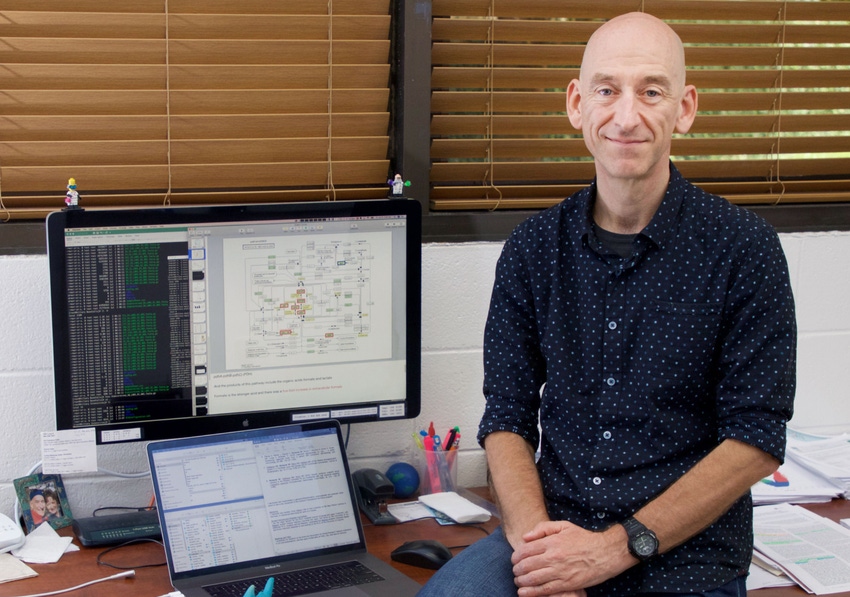Reverse zoonosis demonstrated in antibiotic resistance
Genomic migration analysis shows antibiotic resistance moving from humans to animals using Streptococcus agalactiae, a cause of bovine mastitis.
September 17, 2019

New research led by Vincent Richards with Clemson University has documented the movement of antibiotic resistance in humans into animal species, according to an announcement.
Richards, assistant professor of biological sciences in Clemson's College of Science, recently published results that draw attention to reverse zoonosis, or pathogens moving from human populations to animals.
According to Clemson, every year, tens of thousands of Americans get sick from a variety of diseases contracted from animals. Known as zoonotic diseases, these infections are transmitted through food, water or direct contact with animals and include salmonella, Escherichia coli, anthrax and cat scratch disease, to name a few.
While the U.S. Centers for Disease Control & Prevention and other health agencies keep tabs on animal-to-human diseases, there’s a dearth of knowledge about reverse zoonosis, the university said.
According to Richards, humans have acquired antibiotic-resistant genes, most likely through the overuse and abuse of prescription antibiotic drugs.
��“I found actual cases of transmission of these antibiotic resistance genes from humans into livestock, companion animals and wildlife,” said Richards, who speculates that the genetic material was transmitted via animal handling or through wastewater runoff.
Richards reported these findings in an article titled “Population Gene Introgression & High Genome Plasticity for the Zoonotic Pathogen Streptococcus Agalactiae,” which was published in Molecular Biology & Evolution.
In the study, Richards and his collaborators analyzed a global set of 901 genome sequences of the bacteria Streptococcus agalactiae (also known as group B Strep) from nine different host species — humans, cows, dogs, fish, frogs, gray seals, dolphins, goats and a camel — to better understand the transmission process.
S. agalactiae can cause life-threatening illnesses like meningitis, pneumonia and sepsis in newborn babies. In addition, the bacterium is a leading cause of bovine mastitis, an inflammatory disease that limits milk production in dairy cows, Clemson said.
“One of the things that makes the bacteria so interesting is its wide host range,” Richards said. “It doesn’t just infect humans and cows; it infects a whole range of terrestrial and aquatic mammals, reptiles and amphibians and fish. It has quite the taxonomic range for a bacteria.”
As part of the analysis, Richards grouped the genes into core and dispensable categories. Core genes are shared by all the genomes, while dispensable genes appear in only some species’ genomes. Together, the core and dispensable genes make up the pan-genome (the entire gene set of all strains of a species), he explained.
In classifying the genes as either core or dispensable, Richards said he was surprised to discover that only about 10% of the pan-genome was core, while 90% was dispensable.
Significantly, the study showed how high bacterial genome plasticity can produce an expansive and yet highly partitioned pan-genome, which, in turn, facilitates further expansion of the pan-genome. Plasticity allows bacteria to adapt their DNA quickly so they can survive changes in their environment, Richards said. As the pan-genome expands, continued adaptation to a diverse landscape of niches produces multiple biochemically diverse and divergent populations.
This population expansion can cause directionally biased spillover, demonstrating how genes selected in one niche or host can ultimately be transmitted into another, he said.
“You have genes that are adapted to a particular population now being transferred into another population,” Richards said. “A particular gene for antibiotic resistance that was selected in human populations is now being transmitted into animal populations.”
In the future, Richards hopes to apply the genomic methods utilized in this study to his group’s research on related Streptococcus bacteria found in the human mouth.
Richards’ collaborators on this study included Clemson undergraduates Garrett Springer and Brett Probert, Clemson graduate student Hayley Hasler, former Clemson post-doctoral researchers Irina Velsko at the Max Planck Institute for the Science of Human History and Tauqeer Alam at the University of Illinois at Urbana-Champaign College of Veterinary Medicine, Ruth Zadoks and Chiara Crestani at the Moredun Research Institute, Shannon Manning at Michigan State University, Paulina Pavinski Bitar and Michael Stanhope at the Cornell University College of Veterinary Medicine and Christopher Town at the J. Craig Venter Institute.
Source: Clemson University, which is solely responsible for the information provided and is wholly owned by the source. Informa Business Media and all its subsidiaries are not responsible for any of the content contained in this information asset.
You May Also Like


.png?width=300&auto=webp&quality=80&disable=upscale)
